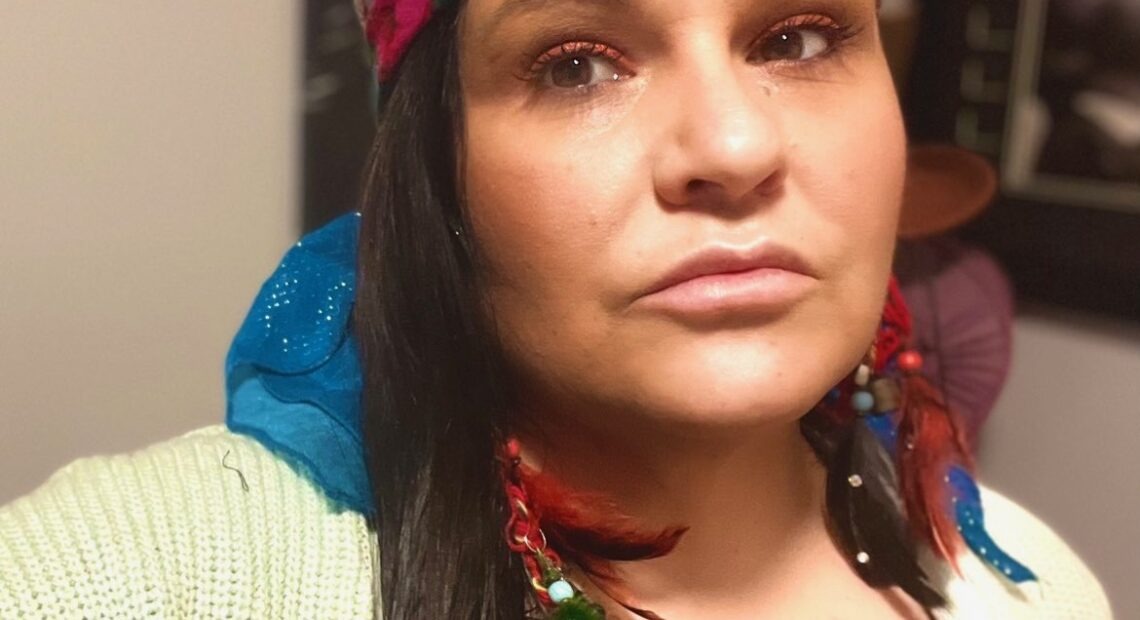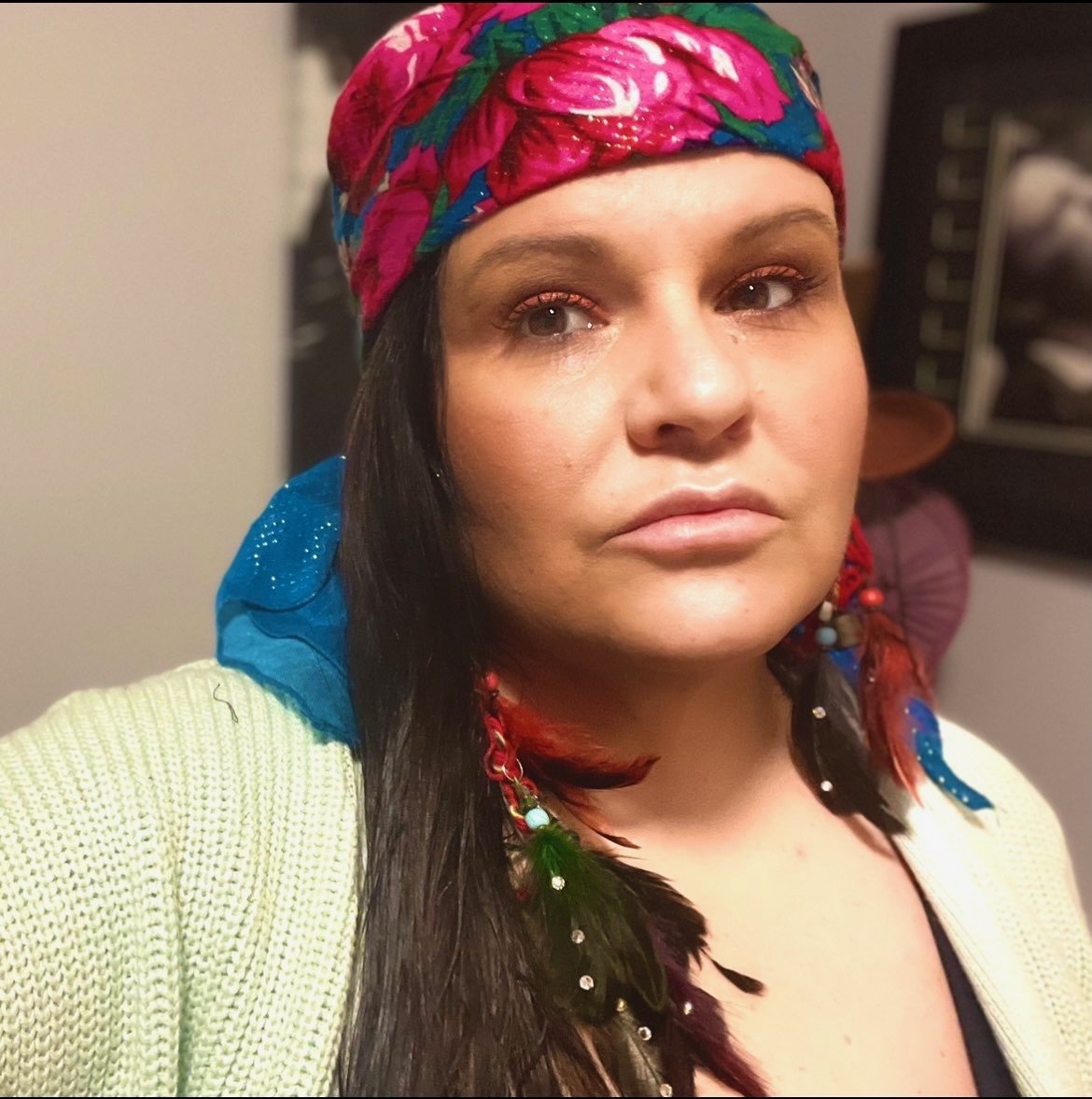Brandi Morin lives outside of Edmonton, Alberta, and she says near her Cree Nation, there’s a large Ukrainian population.
“My heart was going through turmoil for what’s going on,” Morin says.
She says it wasn’t that long ago when indigenous people had invaders at their doorstep. And they too, had to flee their land with their children.
“I just wanted to express that I’m with them in my spirit and in my heart,” Morin says. “That I care. That I love them. And that we’re thankful for them. We’re thankful for their friendships that we have with them and the relationships and the respect they’ve shown us over the years.”
Morin says the Ukrainian scarves have a name in Canada’s Cree Country – kokum. It means grandma. But they come from many Slavic countries and go by many different names across the U.S.

Grandmas
Across the border in the U.S., Bobbie Conner points out her great grandmother in an old framed photograph.
“Grandma Wyasus, my mom’s grandma, was born at Wayam, near the Columbia River,” Conner says. “Around 1853. And she escaped a Fort Dalles soldiers’ raid at the age of 13 or 14 and canoed alone up the Columbia River.”
Her great grandmother, always wore scarves to cover her hair.

“And this image of her shows her wearing not only a scarf on her head, but her high top moccasins,” Conner says, “she never wore shoes, she never wore pants and she never cut her hair.”
Conner lived for many years with her grandmother, Xhilmat.
“When she was working at home doing laundry, gardening, making pies she would tie her scarf with all the points tied down and the knot tied down in front,” she says. “And so how she wore her scarf let us know what kind of day we were in for as children.”
Conner is the head of the Tamástslikt Cultural Institute on the Umatilla Reservation near Pendleton, Oregon.
The museum’s gift shop sells neatly folded Pendleton blankets, huckleberry candies and – for pow-wows, funerals and root feasts – stacks and stacks of scarves.
“From bright white, to neon yellow to neon green and neon orange,” Conner says. “To the more traditional colors of burgundy, red, dark green, royal blue.”

Grimly familiar
Scarves were early trade items when immigrants met tribal people. What’s happening to Ukrainian people feels grimly familiar to descendants of Northwest tribes, like Conner.
“It didn’t happen very long ago and it wasn’t very far away,” Conner says. “It was right here in this country, not very long ago that our people were being treated in the same way.”
Aaron Quaempts is a member of the Confederated Tribes of the Umatilla Reservation. He’s bought several scarves.
“I had seen the hashtag or the social media going, if you have one wear it for solidarity,” Quaempts says.

When he watches the news from Ukraine he thinks of his own family.
“It’s just heartbreaking to see people having to go through that,” he says. “Fathers having to say goodbye to their kids while they are evacuating so they can take up arms and you know defend Ukraine.”
From Indian Country to Ukraine – there’s a little thread of brightly-colored material tying people together in pain and hope.


















